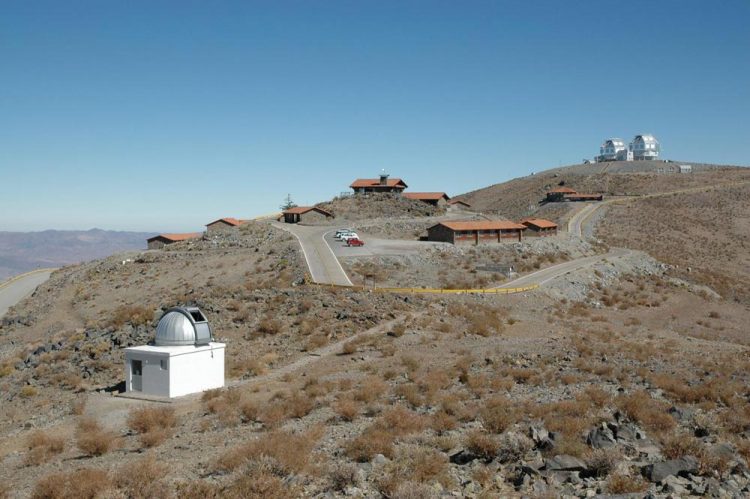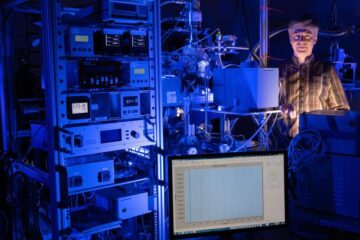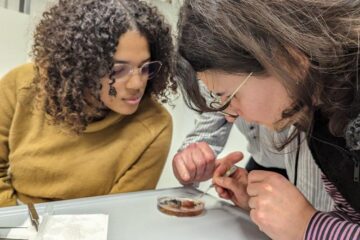Musical sun reduces range of magnetic activity

The Birmingham Solar-Oscillations Network (BiSON) station at Las Campanas, Chile. It is equatorially mounted and housed in a small dome. This site consistently produces the best BiSON data. Credit: S.J. Hale / University of Birmingham / BiSON
Prof Yvonne Elsworth, of the School of Physics and Astronomy at the University of Birmingham, explains: “The Sun is very much like a musical instrument except that its typical notes are at a very low frequency – some 100,000 times lower than middle C. Studying these sound waves, using a technique called helioseismology, enables us to find out what's going on throughout the Sun's interior.”
The Sun acts as a natural cavity to trap sound, which is generated by turbulence in the outermost few-hundred-kilometres of the convection zone. The University of Birmingham is one of the pioneers in the field of helioseismology and researchers have been using the Birmingham Solar Oscillations Network (BiSON) to study the Sun through sound waves since 1985.
This period covers three of the Sun's 11-year activity cycles, which see fluctuations in the rate at which energetic particles are created by the interaction between the Sun's magnetic field and its hot, highly charged outer layers.
The Sun is currently heading towards a period of minimum activity and an international team has used the full BiSON dataset to try to look for clues in previous cycles as to what might be causing some unusual solar activity observed lately.
“Recent activity maxima have actually been rather quiet and the last cycle had a long, extended minimum,” notes Elsworth. “It will be interesting to see if the minimum of this current cycle is extended in the manner of the previous one or if it will soon be back to the conditions of the past. However, if it is a normal minimum it will also be interesting to ask why the previous one was unusual.”
In work just published in the Monthly Notices of the Royal Astronomical Society, the team shows that the interior of the Sun has changed in recent years, and that these changes persist in the current cycle.
In combination with theoretical models, the observations suggest that the magnetic field distribution in the outer layers may have become a bit thinner. Other seismic data shows that the rotation rate of the Sun has also undergone some changes in the way the Sun rotates at different latitudes.
“Again, this is not how it used to be and the rotation rate has slowed a bit at latitudes around about 60 degrees. We are not quite sure what the consequences of this will be but it's clear that we are in unusual times. However, we are beginning to detect some features belonging to the next cycle and we can suggest that the next minimum will be in about two years,” says Elsworth.
Media Contact
All latest news from the category: Physics and Astronomy
This area deals with the fundamental laws and building blocks of nature and how they interact, the properties and the behavior of matter, and research into space and time and their structures.
innovations-report provides in-depth reports and articles on subjects such as astrophysics, laser technologies, nuclear, quantum, particle and solid-state physics, nanotechnologies, planetary research and findings (Mars, Venus) and developments related to the Hubble Telescope.
Newest articles

Peptides on Interstellar Ice
A research team led by Dr Serge Krasnokutski from the Astrophysics Laboratory at the Max Planck Institute for Astronomy at the University of Jena had already demonstrated that simple peptides…

A new look at the consequences of light pollution
GAME 2024 begins its experiments in eight countries. Can artificial light at night harm marine algae and impair their important functions for coastal ecosystems? This year’s project of the training…

Silicon Carbide Innovation Alliance to drive industrial-scale semiconductor work
Known for its ability to withstand extreme environments and high voltages, silicon carbide (SiC) is a semiconducting material made up of silicon and carbon atoms arranged into crystals that is…





















